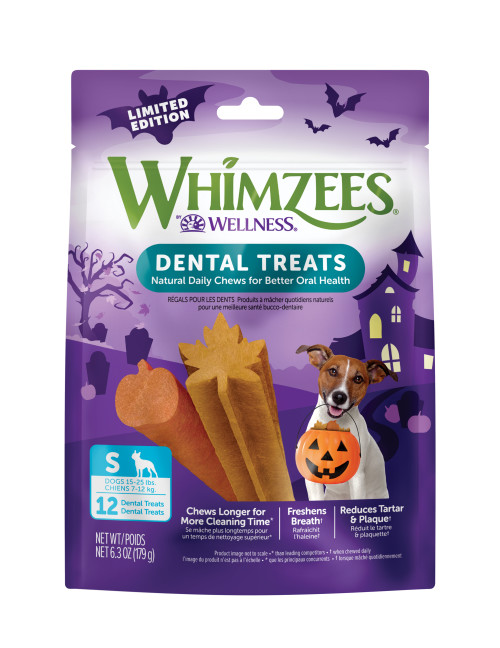February 5, 2024
The Basics of Cat Dental Care: Keep Your Feline Friend’s Smile Bright
Cats are known for their independence, agility, and adorable whiskers, but their tendency for dental challenges is often overlooked. Cats tend to hide pain and discomfort, and they are not as likely to lick your face like dogs may, exposing foul-smelling breath that can tip you off to dental disease. Since cats often mask the signs of dental disease, it is important for pet parents to be diligent in knowing what to look for in potential problems and how to prevent them.
Dental problems are very common in cats, with some studies reporting more than 70% of adult cats experience dental disease. The most common forms of these diseases are largely preventable or treatable with appropriate preventive dental care and monitoring, but unfortunately, less than 20% of pet parents regularly clean their cat’s teeth.1 Dental diseases can lead to pain, infection, and even affect their overall health. Bacteria from dental disease can spread systemically to the kidneys, heart, and liver. In addition to preventing systemic problems, good dental health is also essential to ensure that cats can comfortably obtain the necessary nutrition to support them throughout life.
Recognizing the signs of dental problems in your cat is the first step in providing proper care. One of the first signs may be bad breath. Bad breath, also called “halitosis,” can be caused by a variety of factors other than dental disease, but by far, the most common reason is poor dental hygiene. Pet parents should pay attention to other subtle changes in behavior and habits that might indicate discomfort. Some signs of dental pain in cats can include:
- Changes in eating or drinking habits
- Decreased grooming
- Hiding or isolating themselves more than usual
- Aggression or irritability
- Drooling
- Pawing at the mouth or head shaking
It is important to observe for all the above signs, because cats are very adept at masking pain. This is a behavior that can be traced back to their evolutionary instincts. There are several reasons why cats tend to conceal their pain. In the wild, showing signs of weakness or pain can make a cat vulnerable to predators. Thus, cats have evolved to mask pain as a survival strategy. They are less likely to attract the attention of potential threats if they don’t display signs of injury or illness. Cats tend to have a stoic demeanor, and their facial expressions and body language are generally less expressive than those of dogs, which can make it more challenging to detect pain based on visual cues alone.
Other signs of dental disease require a visual examination of your cat’s mouth, best performed by a veterinarian. When your veterinarian examines your cat’s mouth, they check for, among other things, plaque, tartar, gums, and breath. They may notice a visible buildup of tartar and plaque as yellow or brown accumulation on your cat’s teeth, which can lead to gum disease. And in severe cases, there may be wiggly or missing teeth. Similar to people, cats benefit from regular dental checkups and cleaning. Schedule appointments with your veterinarian at least once a year for a thorough examination of your cat’s oral health.
In addition to professional checkups and cleanings, you can take steps to maintain your cat’s dental health at home. This not only keep your cat’s teeth and gums healthy, it also helps to minimize additional costs that can incur during professional cleanings. Depending on the area, the average cat dental cleaning cost in the US is around $200-400 (excluding pre-anesthetic blood work, anesthesia/monitoring, x-rays, medications, etc.) and the cost can increase with more severe dental disease that may require tooth extractions, which cost on average $50-130 per tooth, and additional medication for treatment. The most popular way for pet parents and cats to help support oral health, is to give daily dental treats, such as the WHIMZEES cat dental treats. Providing dental treats can be an enjoyable way to bond with your cat while reducing plaque and tartar buildup to keep the breath fresh and the gums healthy. Some pet parents choose dental cat foods that are designed to clean teeth as your cat chews. And finally, as daunting as it may sound, with training and consistency, daily brushing of your cat’s teeth is optimal.
If your cat develops dental disease, you should visit your veterinarian who may recommend testing and treatments such as a dental x-rays and professional dental cleaning. These may be necessary to remove tartar and plaque buildup. In severe cases, damaged teeth may need to be extracted to prevent further issues. When indicated, antibiotics or pain medications may be prescribed to address infections and discomfort.
Taking care of your cat’s dental health is a vital aspect of responsible pet ownership. Regular checkups, at-home care, and early intervention can ensure your feline friend enjoys a healthy mouth and a happier, longer life. Make cat dental care a priority and keep that adorable smile shining bright!
References:
- “Feline Dental Disease | Cornell University College of Veterinary Medicine.” Cornell University College of Veterinary Medicine, 4 Oct. 2017, https://www.vet.cornell.edu/departments-centers-and-institutes/cornell-feline-health-center/health-information/feline-health-topics/feline-dental-disease#:~:text=Diseases%20of%20the%20teeth%20and,preventive%20dental%20care%20and%20monitoring.





